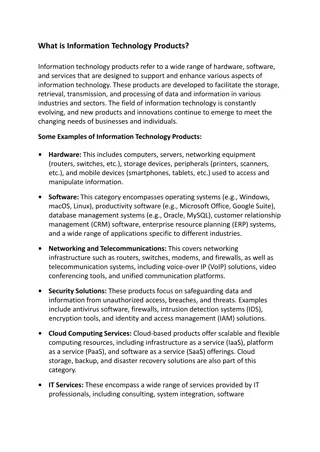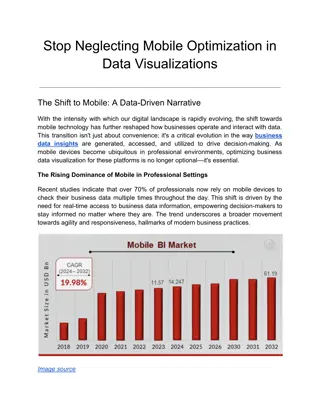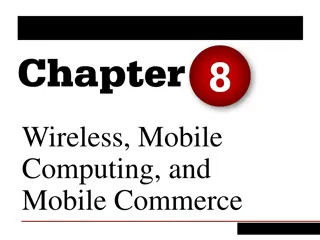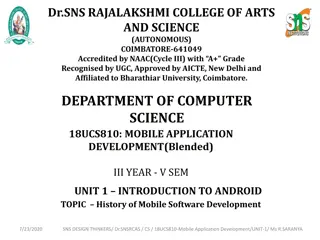Comprehensive Overview of Mobile Communications Evolution and Technologies
Explore the evolution and key aspects of mobile communications, covering topics such as wireless communication, Bluetooth, Wi-Fi, LTE, mobile phone generations (1G to 4G), handover procedures, and the basic structure of cellular networks. Dive into the world of mobile technology with insights from Prof. Jong-Moon Chung's lecture notes at Yonsei University.
Uploaded on Sep 29, 2024 | 3 Views
Download Presentation

Please find below an Image/Link to download the presentation.
The content on the website is provided AS IS for your information and personal use only. It may not be sold, licensed, or shared on other websites without obtaining consent from the author.If you encounter any issues during the download, it is possible that the publisher has removed the file from their server.
You are allowed to download the files provided on this website for personal or commercial use, subject to the condition that they are used lawfully. All files are the property of their respective owners.
The content on the website is provided AS IS for your information and personal use only. It may not be sold, licensed, or shared on other websites without obtaining consent from the author.
E N D
Presentation Transcript
Wireless Communication Hwajung Lee Key Reference: Prof. Jong-Moon Chung s Lecture Notes at Yonsei University
Wireless Communications Bluetooth Wi-Fi Mobile Communications LTE LTE-Advanced
Mobile Communications Handover Mobile Communications Downlink & Uplink
Mobile Communications Handover Mobile Communications Handover
Mobile Communications Handover Mobile Communications Handover
Mobile Communications Handover Mobile Communications Handover
Mobile Communications Handover Mobile Communications Handover
Mobile Communications Handover Mobile Communications Handover
Mobile Communications Handover Mobile Communications Handover
Basic Mobile Communications Structure Structure of the mobile phone cellular network A network of radio base stations forming the base station subsystem. The core circuit switched network for handling voice calls and text A packet switched network for handling mobile data The public switched telephone network (PSTN) to connect subscribers to the wider telephony network
Mobile Communications Mobile Phone Evolution 1stGeneration (1G) AMPS 2nd Generation (2G) GSM, IS-95 (cdmaOne) 3rd Generation (3G) UMTS (WCDMA), CDMA2000 4th Generation (4G) LTE-A
AMPS Advanced Mobile Phone System (AMPS) 1stGeneration (1G) mobile cellular phone Analog standard using FDMA (Frequency Division Multiple Access) Developed by Bell Labs Introduced in North America in Oct. 1983
GSM GSM Global System for Mobile Communications (GSM) 2nd Generation (2G) mobile cellular phone: Digital system Introduced in Finland in 1991 Dominant global standard Over 90% market share Operated in over 219 countries & territories
GSM GSM Global System for Mobile Communications (GSM) GSM uses TDMA & FDMA combined TDMA (Time Division Multiple Access) FDMA (Frequency Division Multiple Access)
GSM Global System for Mobile Communication (GSM) GSM supports voice calls and data transfer speeds up to 9.6 kbps, and SMS (Short Message Service)
GSM GSM SIM (Subscriber Identity Module) SIM is a detachable smart card SIM contains user subscription information and phone book
GSM GSM SIM Advantages SIM enables a user to maintain user information even after switching cellular phones Or, by changing ones SIM a user can change cellular phone operators while using the same the mobile phone
IS-95: cdmaOne IS-95 IS-95 (Interim Standard 95) is the first CDMA based 2G digital cellular standard Why CDMA? CDMA performs well against (narrow band) interference and (multipath) signal fading cdmaOne is the brand name for IS-95 that was developed by Qualcomm
IS-95: cdmaOne IS-95 Hutchison launched the first commercial cdmaOne network in Hong Kong in September 1995 IS-95 traffic channels support voice or data at bit rates of up to 14.4 kbps
UMTS Universal Mobile Telecommunications System (UMTS) 3rd Generation (3G) mobile cellular system Evolution of GSM UTRA (UMTS Terrestrial Radio Access) supports several different terrestrial air interfaces
UMTS Universal Mobile Telecommunications System (UMTS) Multiuser Access in UTRA can be supported by UTRA-FDD or UTRA-TDD FDD (Frequency Division Duplex) TDD (Time Division Duplex)
UMTS: WCDMA WCDMA(Wideband Code Division Multiple Access) 3rd Generation (3G) mobile cellular system that uses the UTRA-FDD mode 3GPP (3rd Generation Partnership Project) Release 99 Up to 2 Mbps data rate
UMTS: WCDMA WCDMA First commercial network opened in Japan is 2001 Seamless mobility for voice and packet data applications QoS (Quality of Service) differentiation for high efficiency of service delivery Simultaneous voice and data support Interworks with existing GSM networks
CDMA2000 CDMA2000 3G mobile cellular system Standardized by 3GPP2 Evolution of IS-95 cdmaOne standards Uses CDMA & TDMA CDMA (Code Division MultipleAccess) TDMA (Time Division MultipleAccess)
CDMA2000 CDMA2000 Initially used in North America and South Korea (Republic of Korea)
CDMA2000 CDMA2000 1xEV-DO CDMA2000 1xEV-DO (Evolution-Data Optimized) enables 2.4 Mbps data rate CDMA2000 1xEV-DO network launched in South Korea on January 2002
CDMA2000 CDMA2000 1xEV-DO Regarded as the first 3G system based on ITU standards ITU (International Telecommunication Union) is the specialized agency for information and communication technology of the UN (United Nations)
HSDPA High-Speed Downlink Packet Access (HSDPA) Enhanced 3G mobile communications protocol Evolution of UMTS for higher data speeds and capacity Belongs to the HSPA (High-Speed Packet Access) family of protocols
HSDPA High-Speed Downlink Packet Access (HSDPA) HSDPA commercial networks became available in 2005 Peak Data Rate Downlink: 14 Mbps (Release 5)
EV-DO Rev. A EV-DO Rev. A (Revision A) Peak Data Rate Downlink: 3.1 Mbps Uplink: 1.8 Mbps Launched in the USA on October 2006 VoIP support based on low latency and low bit rate communications
EV-DO Rev. A EV-DO Rev. A Enhanced Access Channel MAC Decreased connection establishment time Multi-User Packet technology enables the ability for more than one user to share the same timeslot QoS (Quality of Service) flags included for QoS control
HSPA+ Evolved High-Speed Packet Access (HSPA+) HSPA+ all IP network first launched in Hong Kong in 2009 WCDMA (UMTS) based 3G enhancement HSPA+ is a HSPA evolution
HSPA+ Evolved High-Speed Packet Access (HSPA+) Peak Data Rate Downlink: 168 Mbps Uplink: 22 Mbps MIMO (Multiple-Input & Multiple-Output) multiple-antenna technique applied Why MIMO? MIMO uses uncorrelated multiple antennas both at the transmitter and receiver to increase the data rate while using the same signal bandwidth as a single antenna system.
HSPA+ Evolved High-Speed Packet Access (HSPA+) Higher Date Rate Accomplished by MIMO multiple-antenna technique Higher order modulation (64QAM) Dual-Cell HSDPA is used to combine multiple cells into one
EV-DO Rev B EV-DO Rev. B (Revision B) EV-DO Rev. B was first deployed in Indonesia on January 2010 Multi-Carrier evolution of Rev. A Higher data rates per carrier Downlink Peak 4.9 Mbps per carrier Uplink Peak 1.8 Mbps per carrier
EV-DO Rev B EV-DO Rev. B Reduced latency from statistical multiplexing across channels Reduced delay Improved QoS Longer talk-time & standby time Hybrid frequency re-use & Reduced interference at Cell Edges and Adjacent Sectors Improved QoS at the Cell Edge
EV-DO Rev B EV-DO Rev. B More Efficient Asymmetric Data Rate Support Downlink Uplink Data Rates Asymmetric Service Examples File transfer Web browsing Multimedia content delivery etc.
EV-DO Rev B LTE Long-Term Evolution (LTE) LTE launched in North American on September 2010 with the Samsung SCH-R900 Deployed on both GSM and the CDMA mobile operators
EV-DO Rev B Long-Term Evolution (LTE) Peak Data Rate (Release 8) Downlink: 300 Mbps Uplink: 75 Mbps
LTE-A LTE-A (LTE-Advanced) Considered as a 4G technology based on the ITU-R IMT-Advanced process Peak Data Rate (Release 10) Downlink: 3 Gbps Uplink: 1.5 Gbps
LTE-A LTE-A (LTE-Advanced) LTE-A incorporates higher order MIMO (4 4 and beyond) and allows multiple carriers to be bonded into a single stream
References H. Holma andA. T oskala, HSDPA/HSUPA for UMTS: High Speed Radio Access for Mobile Communications. John Wiley & Sons, 2007. A. R. Mishra, Advanced Cellular Network Planning and Optimisation: 2G/2.5G/3G...Evolution to 4G. John Wiley & Sons, 2006. A. R. Mishra, Fundamentals of Cellular Network Planning and Optimisation: 2G/2.5G/3G...Evolution to 4G. John Wiley & Sons, 2004. R. Steele, P . Gould, and C. Lee, GSM, cdmaOne and 3G Systems. John Wiley & Sons, 2000. J. Korhonen, Introduction to 3G Mobile Communications. Artech House, 2003. H. Holma andA. T oskala, WCDMA for UMTS: Radio Access for Third Generation Mobile Communications. John Wiley & Sons, 2000. HSPAEvolution brings Mobile Broadband to Consumer Mass Markets, Nokia, White Paper, 2008.























